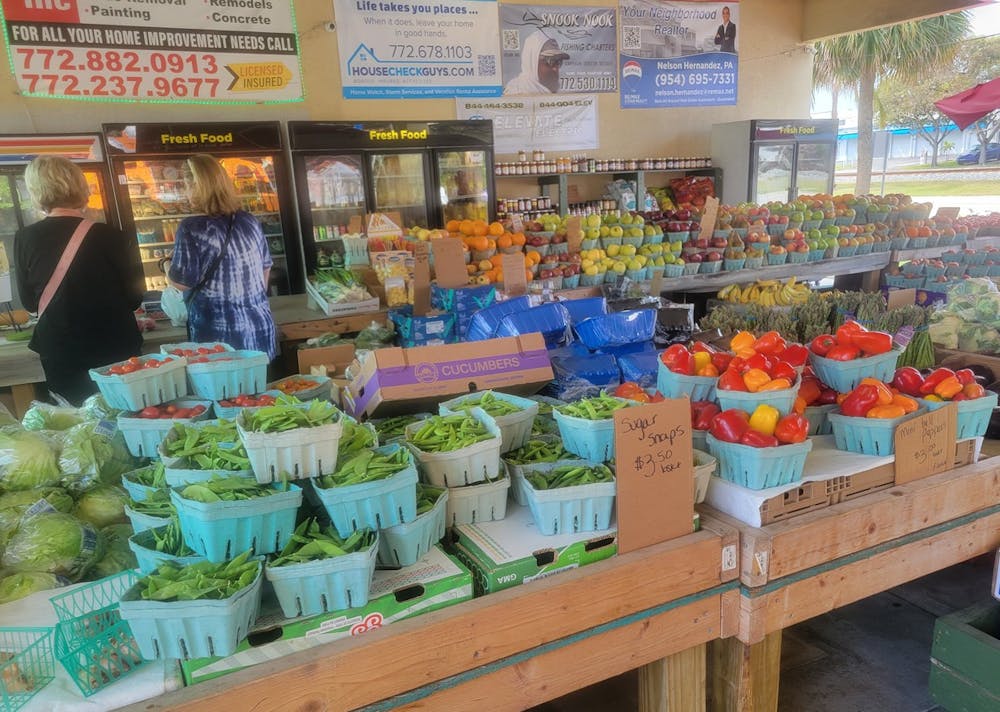Spring break is a time when many folks head to Florida. For someone who values local food, I enjoy the pleasing gastronomic change Florida offers from an Ohio winter.
Florida avocados are different than those sold in most of the country, including Ohio. Most avocados are called Hass, named for Rudolph Hass, who was the first to grow this variety in California in 1926 and patented the variety in 1935. The Hass avocado is relatively small and dark, with a pebbly skin.
In contrast, the Florida avocado is relatively large, with a smooth, light-colored skin. The Florida avocado was hybridized from varieties grown in Guatemala and the West Indies.
Makers of guacamole prefer the Hass variety because its fat and calorie contents are 50% higher than the Florida variety. Oil made with avocado is relatively healthy, so it makes for a good choice for high-temperature frying. On the other hand, Florida avocado works well if sliced for a salad, and its lower-fat content is an asset for dieters.
Florida avocados offer an enduring gift not available with Hass avocados. Bring the Florida avocado pit home, stick 4 toothpicks in its sides, suspend it in a glass of water, wait several months and an avocado plant will grow. It will never yield avocados, but it makes a fine memory of Spring Break in Florida. This doesn’t work with the Hass pit.
Locally grown strawberries won’t appear until summer in Oxford, but March is the peak month for Florida strawberries. A large percentage of Florida strawberries are grown outside Plant City, a town of 40,000 inhabitants in Hillsborough County, about 20 miles east of Tampa.
The city was named not for vegetation but for Henry P. Plant, who was responsible for bringing railroads to Florida’s Gulf Coast in the nineteenth century. The strawberries are extraordinarily juicy and sweet, a healthy substitute for refined sugar.
Florida is also known for its citrus, although the citrus season ends in March. The grapefruit, tangerines and several varieties of oranges are very juicy, but they are exceedingly unattractive.
The reason is simple. Florida citrus growers send the best-looking fruit north, where they command premium prices in big-city supermarkets, while the less attractive but still juicy ones remain in Florida.
The best places to buy produce in Florida are in flimsy structures with canvas roofs that keep out the frequent rainfall, but with no side walls, given the mild year-round climate. Oranges can sell for as little as 10 cents and grapefruit for 25 cents.
Florida is the land of dozens of fish varieties, thanks to the proximity of both the Gulf of Mexico and the Atlantic Ocean. Many of the fish are unfamiliar to Ohioans.
Enjoy what you're reading?
Signup for our newsletter
Swordfish, grouper, snapper, mahi mahi (dolphin) and pompano are especially prized, at least on the Atlantic Ocean side. Of the four, swordfish and mahi mahi are relatively thick and can be cooked on the grill like a steak, whereas pompano and snapper are relatively thin and delicate.
The best way to enjoy Florida fish is minimally altered. If one has access to an oven, simply spread mayonnaise and mustard on top of the fish, sprinkle some herbs like dill and paprika and bake for a few minutes.
Every place in the world has distinctive local foods. One of the most rewarding features of travel is the opportunity to try unfamiliar foods, or very fresh versions of familiar foods.
Jim Rubenstein is Professor Emeritus of Geography. At Miami, he was Chair of the Department of Geography and Adviser for the Urban & Regional Planning major. He now writes human geography textbooks and consults on the auto industry at the Federal Reserve Bank of Chicago. In Oxford, he is Treasurer of the Board of Directors of MOON Co-op Market.




